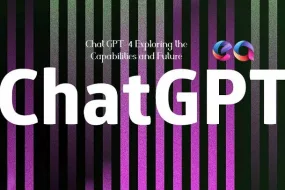
Artificial Intelligence (AI) has come a long way since its inception and has made significant strides in recent years. With advancements in machine learning and natural language processing, AI has become an integral part of our daily lives, from virtual assistants to intelligent chatbots. Google AI Bard is one such innovative AI technology that has taken the AI industry by storm.
Google AI Bard, also known as the Bidirectional Encoder Representations from Transformers, is a cutting-edge AI model developed by Google. It has been designed to perform various language-related tasks such as machine translation, question answering, and text summarization, among others. Bard is considered to be a game-changer in the AI industry because of its ability to understand and generate human-like text.
What sets Google AI Bard apart from its competitors is its bidirectional approach to language processing. Unlike traditional language models that only process text in a single direction, Bard is capable of processing text in both forward and backward directions, allowing it to capture the context of words and phrases from both ends. This results in a much more accurate understanding of the text and enables Bard to generate human-like responses.
One of the key applications of Google AI Bard is in the field of language translation. With its ability to process text in multiple languages and its bidirectional approach, Bard has revolutionized the way we translate text. It has made machine translation much more accurate and efficient, making it possible to translate text in real-time. This has huge implications for businesses and individuals who frequently deal with foreign languages and are looking for an accurate and efficient way to translate text.
In addition to language translation, Google AI Bard has also made a significant impact in the field of chatbots. With its human-like language generation capabilities, Bard has enabled chatbots to engage in more natural and human-like conversations with users. This has made chatbots much more accessible and user-friendly, making them an increasingly popular tool for businesses looking to enhance their customer service.
who is the main competitor of Google AI BARD?
Google AI Bard has several competitors in the field of language-related artificial intelligence tasks, including natural language processing and machine translation. Some of the main competitors of Google AI Bard include:
- OpenAI’s GPT-3: OpenAI’s Generative Pre-trained Transformer 3 (GPT-3) is a cutting-edge AI language model that has received a lot of attention in recent years. It has been designed to perform various language-related tasks and is known for its ability to generate human-like text.
- Microsoft’s Turing-NLG: Microsoft’s Turing-NLG is another popular language model that has been designed to perform various language-related tasks, including natural language generation and text summarization.
- BERT by Google: BERT, or Bidirectional Encoder Representations from Transformers, is another language model developed by Google. It was released prior to Bard and has been widely used for various NLP tasks.
- Facebook’s RoBERTa: RoBERTa, or Robustly Optimized BERT Approach, is a language model developed by Facebook that has been designed to perform various NLP tasks, including text classification and machine translation.
These are some of the main competitors of Google AI Bard, but there are many other AI models and companies in this field that are also making significant contributions. It’s important to note that the AI industry is rapidly evolving, and new models and technologies are being developed all the time.
Difference Between Google AI Bard, Chat GPT 3.0 and others:
Google AI Bard, OpenAI’s GPT-3, Microsoft’s Turing-NLG, Google’s BERT, and Facebook’s RoBERTa are all language models designed to perform various language-related tasks such as natural language processing, machine translation, and text summarization. However, there are some differences between these models that set them apart from one another.
- Google AI Bard: Bard is a relatively new model that was developed to outperform its predecessor, BERT, in language-related tasks. It has a bidirectional approach to language processing, which enables it to understand the context of words and phrases from both ends.
- OpenAI’s GPT-3: GPT-3 is one of the largest language models currently available, with over 175 billion parameters. It has been trained on a massive amount of text data, which allows it to generate human-like text and perform various NLP tasks with high accuracy.
- Microsoft’s Turing-NLG: Turing-NLG is a language model developed by Microsoft that has been designed to perform various NLP tasks, including text generation and summarization. It has a strong focus on privacy and security, which sets it apart from other language models.
- Google’s BERT: BERT is a pre-trained language model developed by Google that has been widely used for various NLP tasks, including text classification and named entity recognition. Unlike Bard, BERT only processes text in a single direction.
- Facebook’s RoBERTa: RoBERTa is a language model developed by Facebook that has been designed to outperform BERT in various NLP tasks. It has been trained on a larger corpus of text data and fine-tuned for longer periods than BERT, which allows it to perform language-related tasks with even greater accuracy.
In conclusion, these language models each have their own unique strengths and weaknesses, and the best one for a particular task depends on the specific requirements of that task. It’s important to keep in mind that the AI industry is rapidly evolving, and new models and technologies are being developed all the time, so the landscape of language models and their relative strengths and weaknesses may change over time.
Samsung Galaxy S23 vs S23 Plus vs S23 Ultra: A Comprehensive Buyers’ Guide
Google AI Bard is a game-changer in the AI industry. With its bidirectional approach to language processing and its ability to understand and generate human-like text, Bard has revolutionized the way we translate text and engage in conversations with chatbots. As AI continues to evolve and make strides in various fields, it will be interesting to see how Bard continues to shape the future of AI and how it continues to impact our daily lives.












